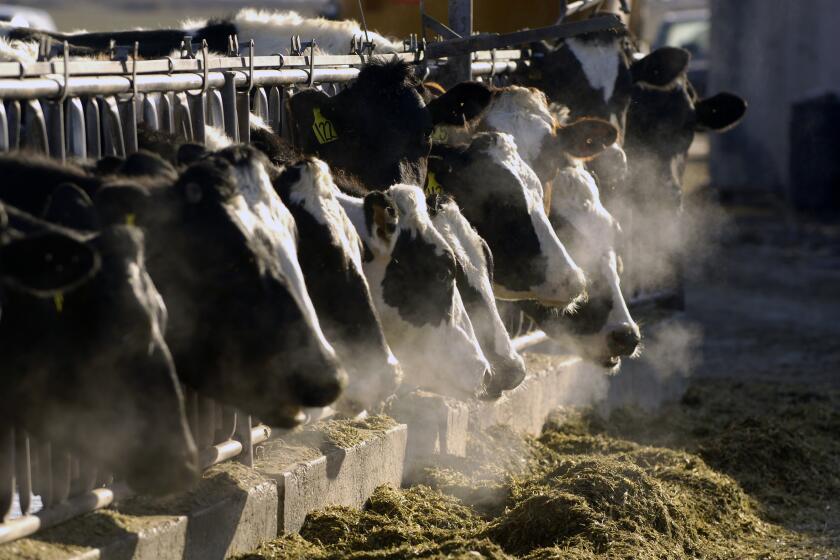Building a home for the cactus wren
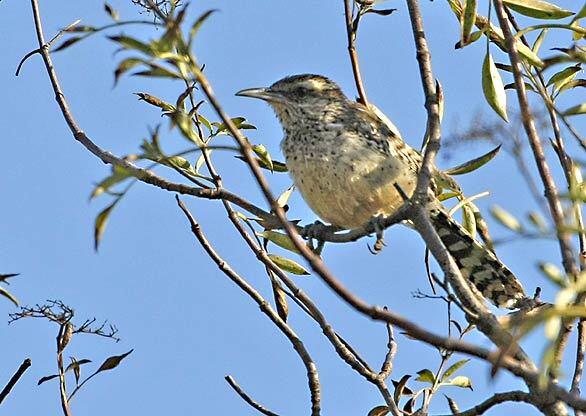
A cactus wren looks for insects in a Mexican elderberry bush in the Irvine Open Space Reserve near Laguna Canyon Road. The bird is about 8 inches long and nests in cactus and thorny plants that grow in the hilly area. (Don Bartletti / Los Angeles Times)
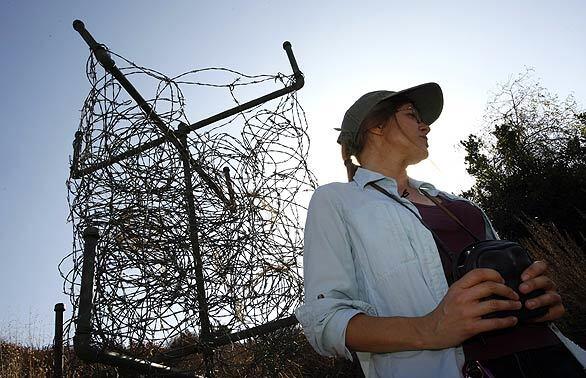
Burger stands next to an artificial nest in the hills above Laguna Canyon Road. Her experiment, a tangle of barbed wire suspended from a pipe framework, is designed to tempt the cactus wren to nest. The birds prefer the thorny prickly pear and cholla cacti. The fake nests might be used where wildfires have destroyed natural cactus habitat. (Don Bartletti / Los Angeles Times)
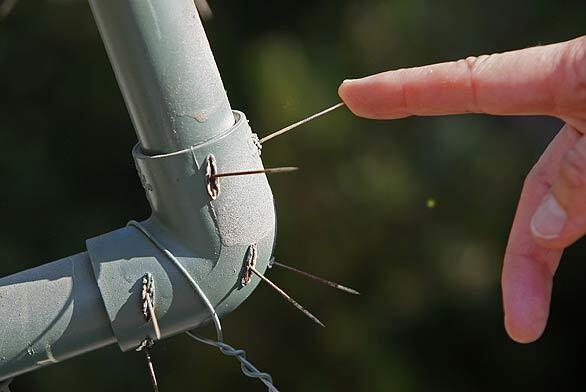
Burger touches a needle imbedded in the PVC frame of an artificial cactus wren nest. The experiment replicates the thorny cactus habitat favored by the little bird. (Don Bartletti / Los Angeles Times)
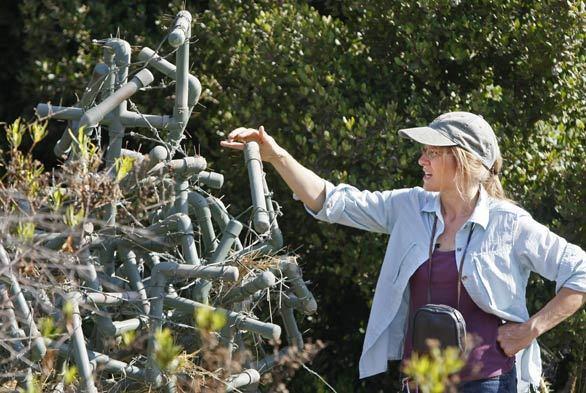
Burger checks on an artificial cactus wren nest. Theres no textbook on this,” she said. “Were starting at zero and using our intuition as to what the birds might like. (Don Bartletti / Los Angeles Times)
Advertisement
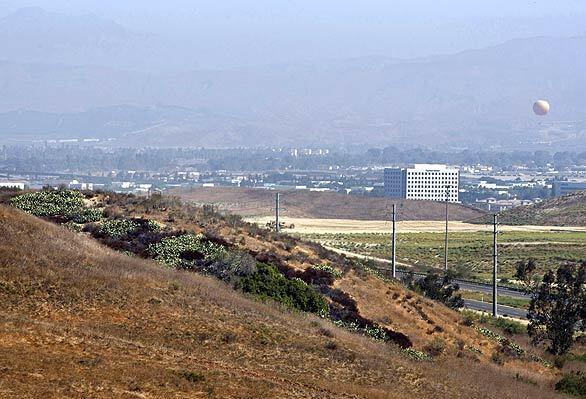
A stand of prickly pear cactus on a hillside in the Irvine Open Space Reserve just off Laguna Canyon Road. Ecologists with the Irvine Ranch Conservancy are using the area to test artificial cactus wren nesting towers. In the distance is the balloon ride at Irvine’s Great Park. (Don Bartletti / Los Angeles Times)

